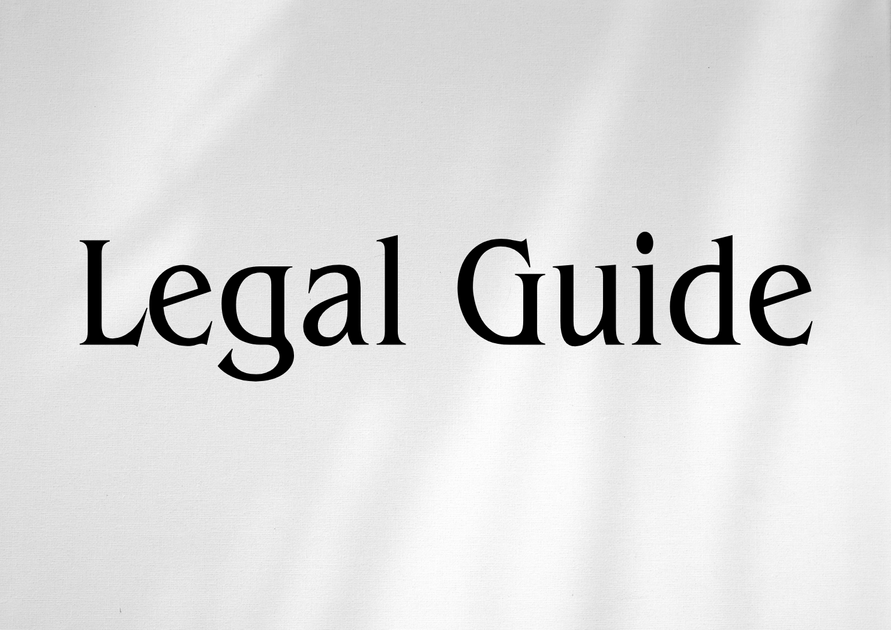Introduction
In a rapidly evolving Middle Eastern financial landscape, the structuring of Islamic financial products in Saudi Arabia commands special attention from businesses, investors, and legal professionals within the UAE and beyond. The significance of this area is multifold—not only does it involve strict compliance with the principles of Sharia, but it must also navigate a complex web of local, regional, and international regulations. Given the close economic and regulatory ties between the UAE and Saudi Arabia, regulatory reforms, judicial precedents, and sector-specific decrees arising in Riyadh have direct implications for UAE entities operating in or trading with the Kingdom. In light of recent legislative updates—such as enhancements to Saudi’s Capital Market Law and continuing changes to Central Bank regulations—the importance of a robust, forward-looking approach to legal compliance cannot be overstated. This consultancy briefing will provide deep, actionable insights for organizations seeking to structure or offer Sharia-compliant products within Saudi Arabia, emphasizing both risk mitigation and compliance strategy as core business objectives.
Table of Contents
- Context and Legal Framework
- Evolution of Islamic Finance Laws in Saudi Arabia
- Sharia Compliance—Essential Principles
- Key Legal Risks in Structuring Islamic Financial Products
- SAMA and CMA Guidelines: Regulatory Oversight
- Comparative Analysis: UAE vs Saudi Arabia
- Case Studies and Hypotheticals
- Risk of Non-Compliance and Enforcement
- Strategies for Legal Compliance
- Future Trends and Business Implications
- Conclusion and Professional Recommendations
Context and Legal Framework
Islamic finance in Saudi Arabia operates within a dual-layered framework: first, the immutable requirements of Sharia law; and second, a comprehensive system of national regulations, spearheaded by the Saudi Central Bank (SAMA), the Capital Market Authority (CMA), and other governmental bodies. The regulatory environment is further influenced by regional GCC initiatives and—crucially for UAE-based firms—the increasing legal and business integration between the two nations. While Saudi law remains rooted in Islamic jurisprudence, recent statutory developments reflect growing sophistication and alignment with international standards, especially regarding disclosure, investor protection, and anti-money laundering. Businesses seeking to structure compliant products must, therefore, demonstrate a deep and evolving understanding of cross-border legal requirements.
Relevant Legal Sources
- Saudi Central Bank (SAMA) Guidelines
- Capital Market Law (Royal Decree No. M/30)
- Implementing Regulations issued by SAMA
- Shariah Governance Regulations (latest updates as of 2023)
- Relevant UAE regulations for comparative context: Federal Decree-Law No. (14) of 2018 on the Central Bank & Organization of Financial Establishments
Evolution of Islamic Finance Laws in Saudi Arabia
The development of a robust, modern Islamic finance sector in Saudi Arabia has been characterized by incremental statutory and regulatory enhancement. While the foundational principles have remained constant, rapid technological innovation, the growth of fintech, and the increasing complexity of cross-border transactions have necessitated ongoing reform.
| Period | Key Laws/Guidelines | Main Features |
|---|---|---|
| Pre-2010 | SAMA Circulars, limited statutory regulation | Basic licensing; absence of detailed product regulation |
| 2010-2015 | Amendments to Banking and Finance laws | Increased focus on Shariah board structures, transparency |
| 2015-2020 | Capital Market Authority updates | Detailed disclosure frameworks, investor protection, auditing rules |
| 2021-2024 | Sharia Governance Regulations (2023 revision) | Enhanced governance; mandatory internal Shariah controls; detailed compliance, audit, and reporting requirements |
Sharia Compliance—Essential Principles
All Islamic financial products must adhere strictly to the core prohibitions of Sharia: avoidance of riba (interest), gharar (uncertainty), and maysir (speculation). These concepts underpin every structuring, marketing, and reporting step for product issuers in Saudi Arabia. For UAE-based advisers and institutions, understanding the Saudi-specific application of these broad rules is crucial. Notably, Saudi regulations mandate:
- Clear allocations of risk and profit sharing (mudarabah, musharakah origins)
- Transparent asset backing (murabaha, ijarah contracts)
- Independent internal Sharia boards—each supervised by qualified scholars
- Rigorous auditing, with detailed annual Sharia compliance reports
The interpretation of these principles may diverge from practice in the UAE, especially regarding tolerance of certain structured contracts or allowances for “commodity murabaha” arrangements.
Key Legal Risks in Structuring Islamic Financial Products
Despite a growing alignment with global best practice, Saudi Arabia’s unique legal framework poses several key legal risks when structuring Islamic financial products:
1. Sharia Non-Compliance
Given the supreme authority of Sharia within the Saudi legal system, products even marginally deviating from jurisprudentially accepted parameters may face invalidation, reputational damage, or regulatory sanction. Documentation that inadvertently references riba-based instruments, or structures enabling impermissible profit extraction, is particularly exposed.
2. Regulatory Gaps and Ambiguity
Unlike common-law jurisdictions or even the increasingly codified system in the UAE, certain grey areas in Saudi regulation require bespoke cross-disciplinary legal, financial, and religious advisory. Inconsistencies between the views of different internal Sharia committees—or between a bank’s own board and the national Shariah Authority—can translate into conflicting compliance obligations. The risk is exacerbated in fintech-driven and cross-border products that operate at the edge of established precedent.
3. Documentation and Disclosure Failures
SAMA and CMA have, in recent years, intensified focus on mandatory consumer disclosures, plain-language documentation, and precise description of Shariah compliance mechanisms in prospectuses. Breaches in these areas can prompt enforcement not only under sectoral law but also anti-fraud and consumer protection statutes.
4. Enforcement Uncertainties
Although there is a growing corpus of regulatory guidelines, in practice, litigation or enforcement of Shariah-compliance claims in Saudi courts can yield unpredictable outcomes—driven by both traditional jurisprudential discretion and evolving statutory interpretation. UAE law firms working with Saudi-facing products must anticipate these uncertainties in their risk assessments.
5. Cross-Border Legal Conflicts
As products are increasingly marketed between Saudi Arabia and the UAE, divergent definitions or interpretations of Islamic instruments—such as sukuk tranches, profit-sharing ratios, or underlying asset classes—can precipitate contractual or enforcement risk for participants on both sides of the border. It is vital to review all cross-jurisdictional frameworks and ensure that legal documentation includes robust conflict-of-law clauses and dispute resolution mechanisms.
SAMA and CMA Guidelines: Regulatory Oversight
The Saudi Arabian Monetary Authority (SAMA) and the Capital Market Authority (CMA) retain comprehensive oversight powers, touching on every phase of product licensing, marketing, monitoring, and enforcement. For UAE-based legal consultants, particular attention should be paid to the most recent regulatory outputs—especially those issued in 2022–2024—which emphasize enhanced governance and internal control requirements.
Key Provisions of the Latest Shariah Governance Regulations
| Requirement | Summary | Practical Application |
|---|---|---|
| Mandatory Internal Shariah Board | Must be comprised of at least 3 qualified scholars, independent of management | Annual compliance reports; ongoing supervision; direct line to SAMA |
| Detailed Audit Function | Regular, independent review of compliance and transaction structures | Engage external auditors with proven Shariah expertise |
| Product Pre-Approval Process | New products require prior SAMA/CMA notification or pre-clearance | Dedicated compliance function; advance legal vetting |
| Enhanced Disclosure | Investor-facing documentation must explain legal, Shariah, and risk aspects in plain language | Update templates; integrate compliance checks in client onboarding |
Comparative Analysis: UAE vs Saudi Arabia
There are several areas where Saudi and UAE Islamic finance law align—especially in requiring internal Shariah committees and rigorous documentation. However, recent Federal Decree updates in the UAE (for instance, Federal Decree-Law No. (14) of 2018 and Cabinet Resolution No. (10) of 2019 on Shariah Governance) have introduced granular requirements for financial institutions—many of which are now mirrored, in evolving form, in Saudi Arabia.
| Feature | UAE Law | Saudi Law |
|---|---|---|
| Internal Shariah Supervisory Board | Mandatory, minimum composition prescribed by Central Bank | Mandatory, independence enforced by SAMA—scholar qualifications specified |
| External Shariah Audit | Compulsory annual external review | Strongly encouraged; becoming compulsory for listed entities (2023 update) |
| Disclosure Obligations | Enhanced since 2019, plain-language summary required | Detailed under current SAMA/CMA regulations, must include legal risk disclosures |
| Pre-Approval of Products | No formal pre-approval, but rigorous notification/registration | Formal pre-clearance required for most new products |
| Enforcement | Dedicated banking & finance courts | General Shariah courts, with specialist benches for financial disputes |
Suggested Visual: A compliance checklist infographic mapping the product structuring journey against specific Saudi and UAE legal requirements.
Case Studies and Hypotheticals
Case Study 1: Cross-Border Sukuk Issuance
A UAE-based bank seeks to structure sukuk certificates for dual-listing in both Abu Dhabi and Riyadh. While both frameworks apply strict Shariah vetting, divergent documentation standards expose the issuer to risk: language nuances in the SUKUK offering circular—acceptable in the UAE—prompt reservations from the Saudi reviewer regarding profit calculation methodologies. The CMA halts listing pending clarification, incurring additional compliance costs and potential investor claims for delay.
Case Study 2: Murabaha Commodity Finance
A fintech startup, licensed in Dubai, offers an app leveraging “commodity murabaha” for quick personal finance facilities, marketing aggressively to Saudi customers. The Saudi regulator investigates, finding disclosure omissions regarding underlying asset types and financing cost calculation. The company is ordered to withdraw, must compensate affected clients, and faces a public fine for failure to adhere to SAMA’s detailed product approval and disclosure guidelines.
Case Study 3: Enforcement Risk Following Shariah Non-Compliance Claim
A Saudi consumer files a complaint alleging that a listed Islamic bank’s investment product was in fact structured to contain excess gharar through a layered derivatives component concealed within a profit-sharing contract. The internal Sharia board disagrees with the client’s assessment, but the regulatory authority imposes a temporary ban on product marketing pending external audit, underlining the significant reputational and financial risks of even disputed non-compliance claims.
Risk of Non-Compliance and Enforcement
Penalties for non-compliance have steadily intensified, reflecting both domestic policy priorities and pressure for convergence with international regulatory norms. Financial and reputational consequences can include:
- Retrospective invalidation of contracts (rendering them void ab initio)
- Civil damages payable to clients/investors
- Regulatory fines and sanctions
- Suspension from product marketing and listing
- Public censure, impacting cross-border relationships and investor trust
| Enforcement Aspect | Pre-2020 | 2022-2024 |
|---|---|---|
| Contract Invalidation | Rarely invoked | Frequent in material non-compliance, especially for riba or gharar |
| Regulatory Fines | Modest, infrequent | Substantial (often exceeding SAR 2m for repeat or willful breaches) |
| Disclosure Failures | Remedial orders mostly | Hefty fines; mandatory investor compensation |
| Reputational Sanctions | Quiet settlements | Highly publicized sanctions—announced on regulator website and in media |
Strategies for Legal Compliance
Given the gravity of the risks—and the sophistication of regulatory oversight—organizations should prioritize a multi-pronged compliance approach. Practical strategies include:
- Early Legal Engagement: Involve experienced cross-border legal consultants at the concept stage of any product intended for the Saudi market.
- Dynamic Shariah Board Formation: Appoint a Shariah board with demonstrably credible, regionally recognized scholars, ensuring ongoing training in both jurisprudence and evolving regulatory requirements.
- Robust Documentation Protocols: Ensure all contract templates, disclosure documents, and marketing collateral are reviewed, tested, and updated in line with both SAMA/CMA guidance and UAE regulatory expectations.
- Proactive Regulator Liaison: Establish routine engagement with SAMA/CMA product approval teams, seeking clarifications ahead of launch, and maintaining open channels for swift issue resolution.
- Auditing and Testing: Regularly audit compliance processes; simulate regulatory inspection scenarios and rectify weaknesses before market entry or new product rollout.
- Dispute Resolution Mechanisms: For cross-border products, draft comprehensive dispute resolution clauses—preferably with arbitration panels inclusive of both Saudi and UAE legal experts.
Suggested Visual: Step-by-step process flow diagram for internal compliance review and regulator engagement.
Future Trends and Business Implications
Saudi Arabia is expected to continue tightening Islamic finance regulation, particularly as fintech, digital banking, and cross-border finance footprints expand. Anticipated areas for further reform include:
- Standardization of Shariah interpretations (closer harmonization with AAOIFI and IFSB benchmarks)
- Tighter controls on fintech-driven Shariah products, including detailed cybersecurity and consumer data mandates
- Integration of ESG criteria into Shariah governance (echoing trends in the UAE and GCC-wide frameworks)
- Rising expectations for transparency, external Shariah audits, and public reporting
For UAE legal consultants and firms, this environment presents both challenges and opportunities: the challenge of navigating a nuanced, fast-changing regulatory space; and the opportunity to lead in cross-border compliance, risk management, and innovative product design.
Conclusion and Professional Recommendations
The legal risks inherent in structuring Islamic financial products in Saudi Arabia are substantial and multifaceted, intensified by both the country’s evolving statutory framework and the strict mandates of Shariah compliance. For UAE-based businesses and legal professionals, the crucial imperative is a rigorous, holistic approach to legal advisory—blending deep jurisprudential understanding with up-to-date regulatory knowledge and practical, preemptive compliance strategies.
Looking forward, the tightening alignment of Saudi and UAE financial law—combined with ongoing global regulatory developments—will only heighten the stakes for compliant, innovative, and risk-resilient Islamic financial products. Firms that proactively invest in cross-border legal expertise, robust Shariah governance, and comprehensive internal control systems will be best positioned to leverage the region’s growth while shielding themselves from costly enforcement challenges.
Best Practices for UAE Firms:
- Monitor official updates from the UAE Ministry of Justice, SAMA, CMA, and the Federal Legal Gazette
- Implement advanced compliance technology for real-time regulatory change tracking
- Prioritize client and investor education to reduce inadvertent compliance errors
- Adopt robust whistleblower and internal audit systems to ensure ongoing, documented compliance
In a rapidly evolving landscape, trusted legal counsel remains your organization’s strongest asset—delivering not just compliance, but the commercial confidence to realize growth in Shariah-compliant finance across the GCC and beyond.



